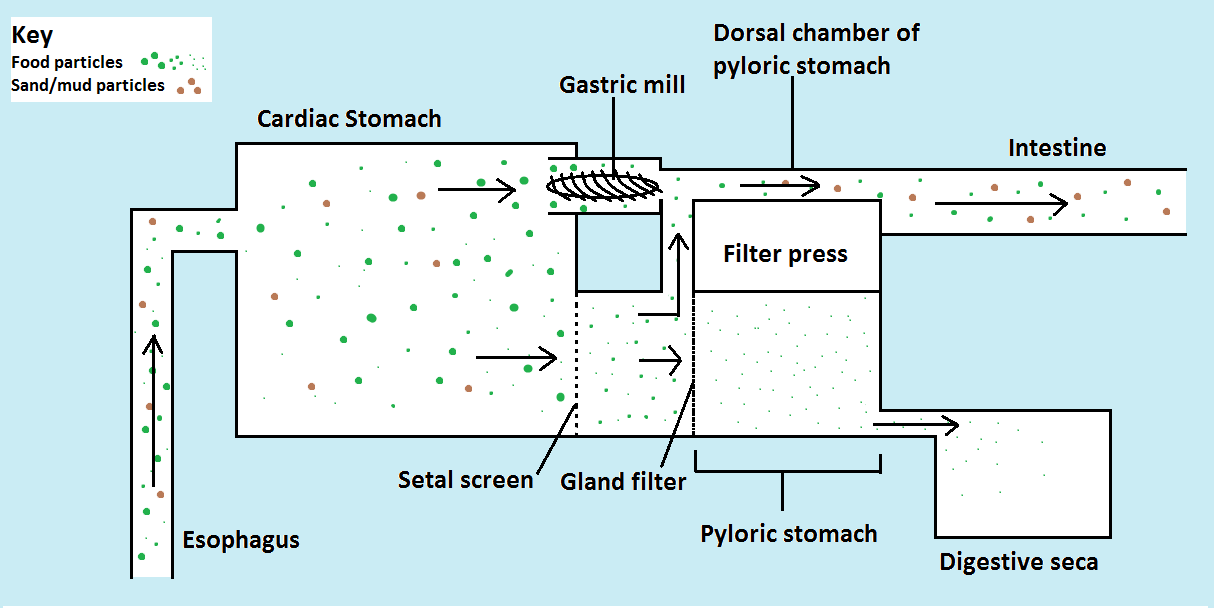Feeding and Digestion
Decapods have a multitude of mouthparts in their buccal frame, giving them a level of complexity above many other invertebrate taxa. The morphology of these mouthparts is taylored to the species and what they eat. The Blue striped hermit crab is an opportunistic feeder and will eat most edible material it comes across. It picks up or tears off food particles using its chelipeds, which then pass it to the third maxillipeds. The mandibles hold the food whilst pieces are torn away by the maxillae and maxillipeds, and passed to the mouth. In anomurans the maxillipeds are designed for filtering food, (Ruppert, Fox & Barnes, 2004.) For a better idea of how the Blue striped hermit crab collects food, please watch the below video.
The food first enters the mouth, and passes through a short esophagus which leads to the first chamber; the cardiac chamber. This chamber contains a gastric mill made of calcareous teeth used for grinding up food. The movement of the stomach walls aid in trituration along with digestive enzymes supplied by the digestive seca. Fine particles and solutes then pass through a setal screen and enter the ventral region of the pyloric chamber. The larger, indigestible particles do not pass through the setal screen and instead pass through a dorsal chamber, bypassing the pyloric chamber. These then go straight on through the long midgut and get incorporated into faces. The digestible particles however must pass through a second filter which has an even smaller mesh size, called the gland filter, and then into the digestive seca. Muscle contractions are what pushes the particles through these filters and chambers. The digestive seca not only produce digestive enzymes for the cardiac stomach, but also phagocytose organic particles and digest them intracellulary. From here, the nutrients are either stored or released into the blood, (see Figure 20)(Ruppert, Fox & Barnes, 2004.)

Figure 20- A diagrammatic representation of the Blue striped hermit crab's digestive tract. (Source: Author, 2014) |